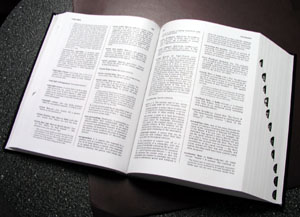
This glossary was created and/or compiled from the participants of the OpenAIRE train-the-trainer bootcamps
Special | A | B | C | D | E | F | G | H | I | J | K | L | M | N | O | P | Q | R | S | T | U | V | W | X | Y | Z | ALL
M |
|---|
MetadataMetadata are data that provide information about other data, e.g. a
description of the content of the data, the date when the data were
produced or collected, tools and devices used to obtain data, file
formats and sizes, the names of the people who created or collected
data, relevant persistent identifiers, etc. Metadata should be created
and provided in accordance with commonly used metadata standards, which
may be general or discipline specific. This ensures that metadata can be
understood by humans and processed and exchanged by machines. Some metadata are automatically generated (by devices used to create
and capture data) and embedded in data files, e.g. in digital audio and
video recordings, while some have to be produced manually. When depositing data in a repository, users are guided by the
user interface through the process of providing metadata. In the input
form, some metadata fields are mandatory, which means that the procedure
cannot be completed if this information is not provided. It is highly
recommended to provide as detailed information as possible even in
non-mandatory fields. Source: https://www.openaire.eu/how-to-comply-with-horizon-europe-mandate-for-rdm (Glossary) *** Structured and machine-readable data that describes and synthesises information about other entities, such as other data, processes or systems in a (preferable) standardized, unambiguous and stable way. The term metadata can be interpreted differently according to the context and field. Metadata can help find, organize, cite, retrieve, reuse and understand data. Metadata, especially semantic annotations, can help to improve query-based machine processing. Metadata can describe the origin, time references, geographic location, creator, title, contributors, units of measure, abbreviations, codes used in the dataset, version information, instrument or protocol information, keywords, tags, etc. Metadata makes data FAIR. Alternative definition: Data about data | |